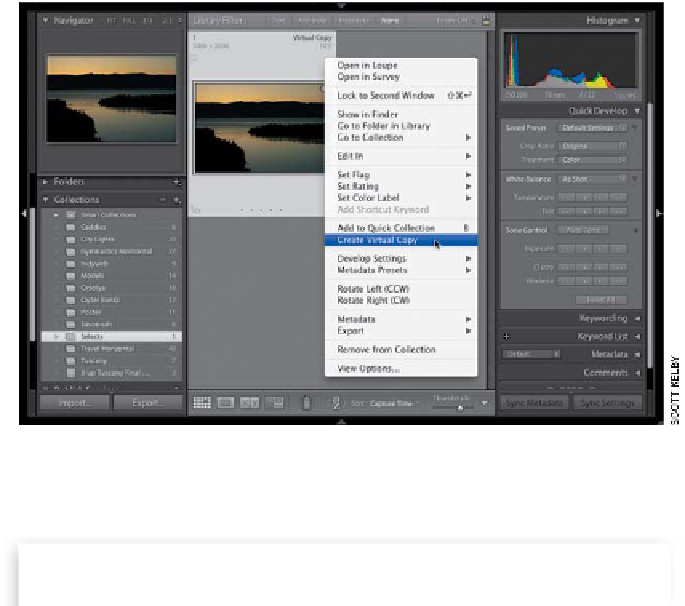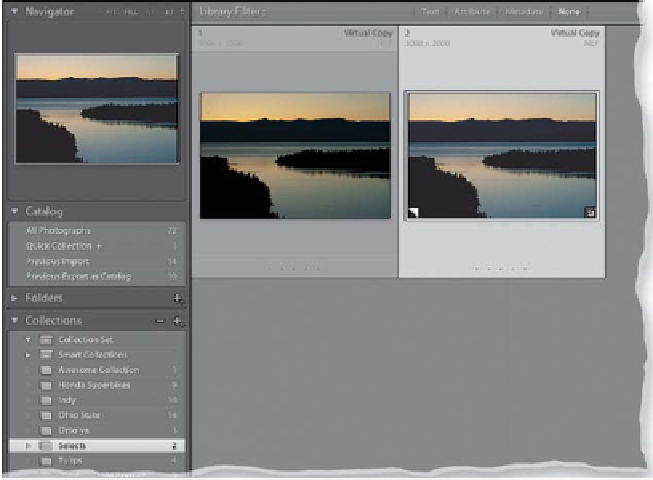Graphics Programs Reference
In-Depth Information
Remember the beauty headshot image we edited earlier? Well, what if you wanted
to see a version in black and white, and maybe a version with a color tint, and then
a real contrasty version, and then maybe a version that was cropped differently?
Well, what might keep you from doing that is having to duplicate a high-resolution file
each time you wanted to try a different look, because it would eat up hard drive space
and RAM like nobody's business. But luckily, you can create virtual copies, which
don't take up space and allow you to try different looks without the overhead.
Step One:
You create a vir tual copy by just Right-
clicking on the original photo and then
choosing
Create Virtual Copy
from the
pop-up menu (as shown here), or using the
keyboard shortcut
Command-' (apostro-
phe; PC: Ctrl-')
. These virtual copies look
and act the same as your original photo,
and you can edit them just as you would
your original, but here's the difference: it's
not a real file, it's just a set of instructions,
so it doesn't add any real file size. That way,
you can have as many of these virtual copies
as you want, and experiment to your heart's
content without filling up your hard disk.
Step Two:
When you create a virtual copy, you'll
know which version is the copy because
the virtual copies have a curled page icon
in the lower-left corner of the image
thumbnail (circled in red here) in both
the Grid view and in the Filmstrip. So
now, go ahead and process this virtual
copy in the Develop module (adjust the
white balance, exposure, shadows, etc.)
and when you return to the Grid view,
you'll see the original and the edited
virtual copy (as seen here).
Continued





















